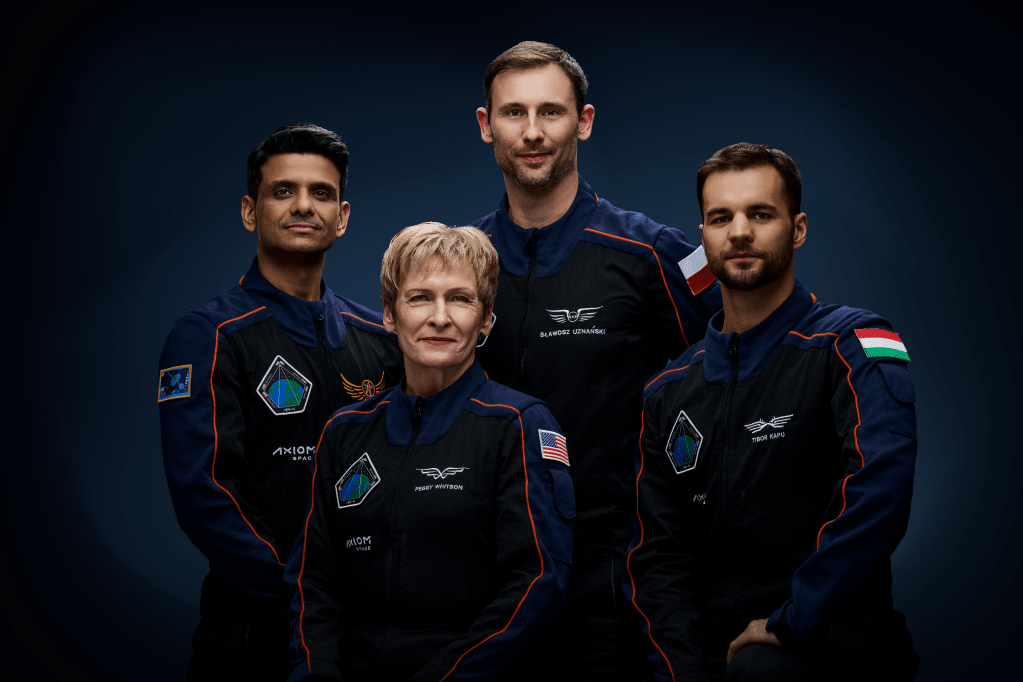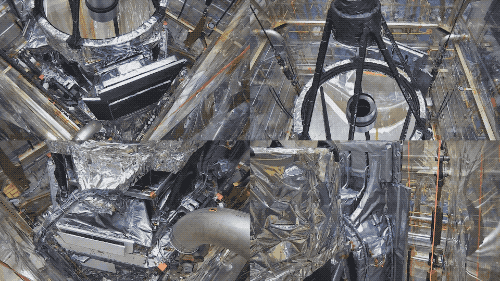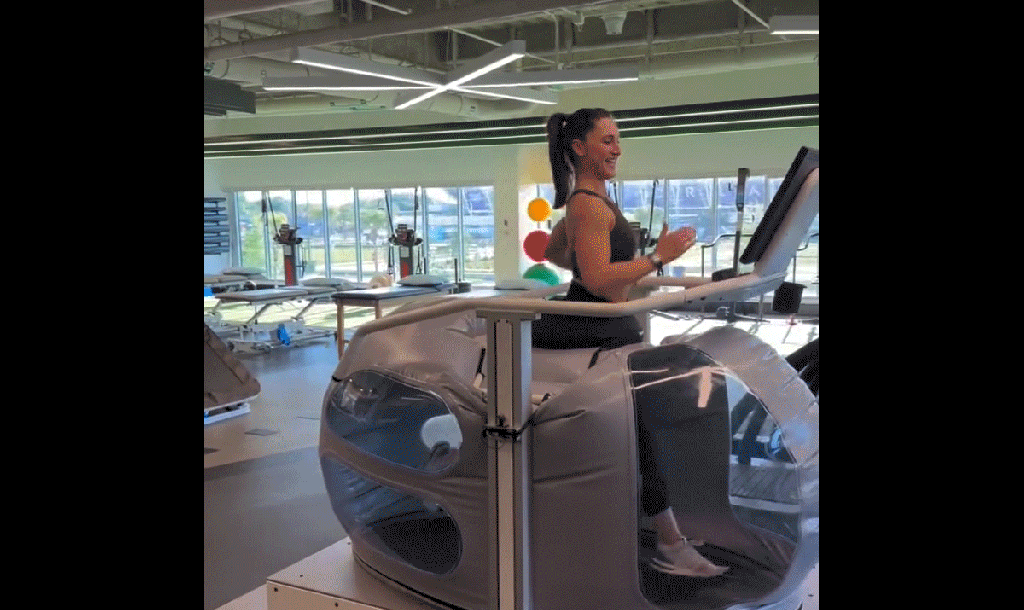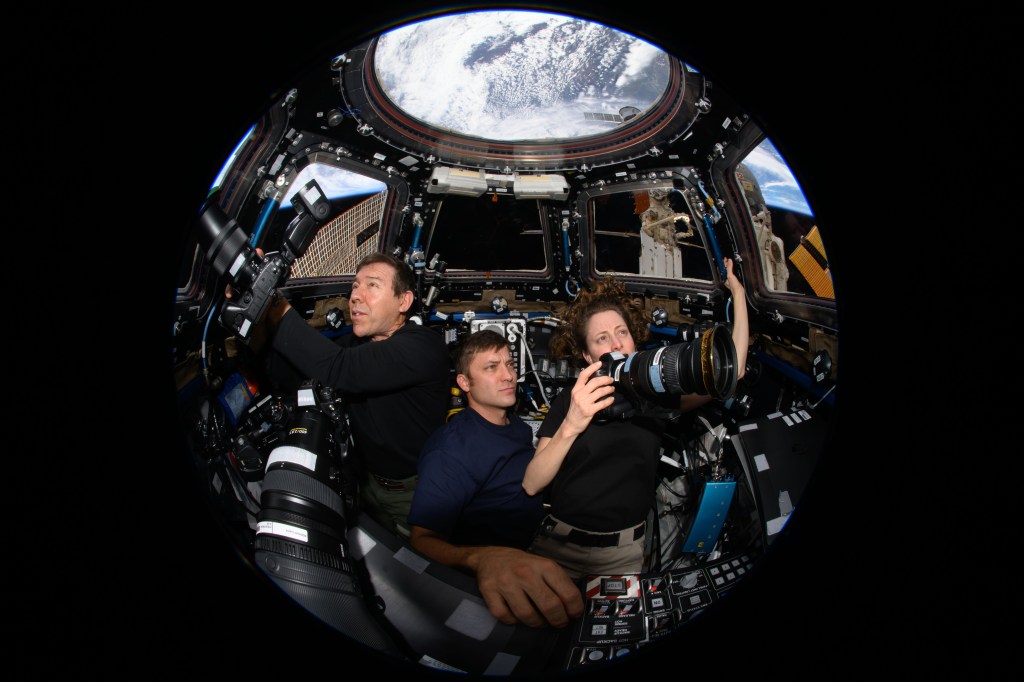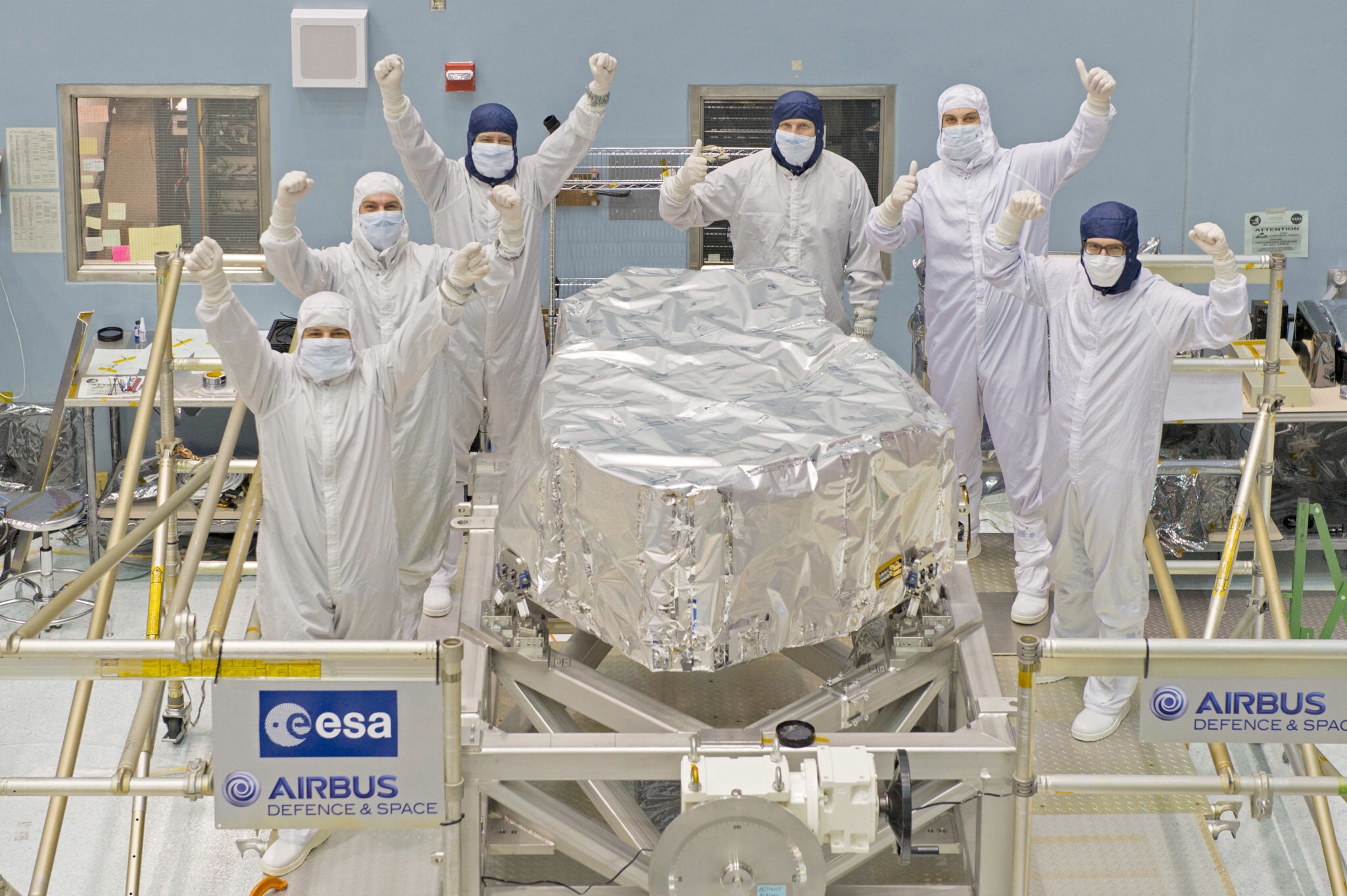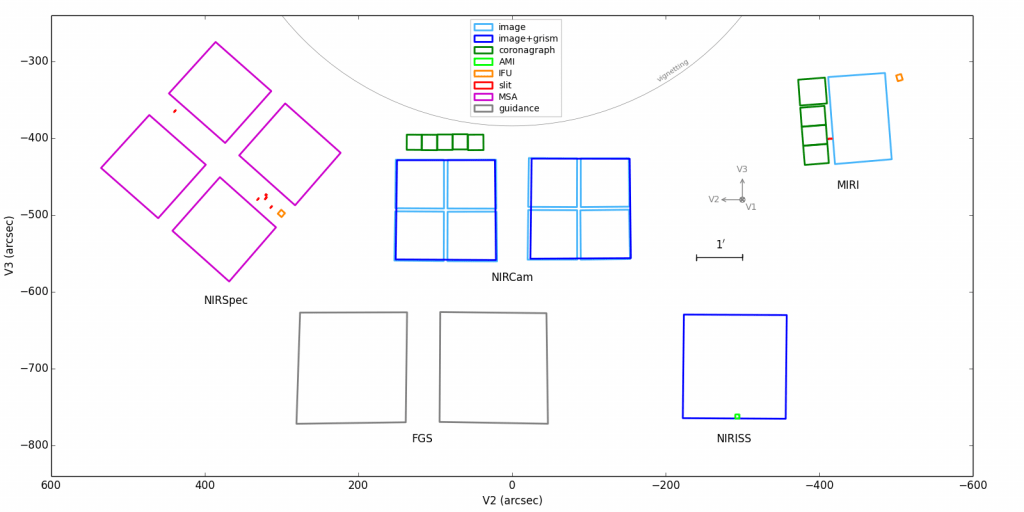Quick Facts
Near InfraRed Spectrograph (NIRSpec)
A spectrograph (also sometimes called a spectrometer) is used to disperse light from an object into a spectrum. Analyzing the spectrum of an object can tell us about its physical properties, including temperature, mass, and chemical composition. The atoms and molecules in the object actually imprint lines on its spectrum that uniquely fingerprint each chemical element present and can reveal a wealth of information about physical conditions in the object. Spectroscopy and spectrometry (the sciences of interpreting these lines) are among the sharpest tools in the shed for exploring the cosmos.
Many of the objects that the Webb is studying, such as the first galaxies to form after the Big Bang, are so faint, that the Webb's giant mirror must stare at them for hundreds of hours in order to collect enough light to form a spectrum. In order to study thousands of galaxies during its 5 year mission, the NIRSpec is designed to observe 100 objects simultaneously. The NIRSpec is the first spectrograph in space that has this remarkable multi-object capability. To make it possible, Goddard scientists and engineers had to invent a new technology, the microshutter system, to control how light enters the NIRSpec.
Techical Description
JWST's Near-Infrared Spectrograph (NIRSpec) is a versatile spectroscopic instrument that operates in the 0.6 to 5.3 μm wavelength range. NIRSpec offers high throughput single object spectroscopy through fixed slits, spatially-resolved integral field unit spectroscopy, and a powerful multi-object spectroscopic mode using a micro-shutter assembly. NIRSpec also has a bright object time series mode through a wide aperture that provides high throughput/high accuracy spectrophotometric monitoring capabilities to the astronomical community.
Components
- Spectrograph : spreads light out into a spectrum so that the brightness of each individual wavelength can be measured.
- Microshutters: Webb’s microshutter array (MSA) is a grid of 248,000 tiny doors that can be opened and closed to transmit or block light in order to capture spectra of 100 individual objects or points in space at the same time.
- Integral Field Unit (IFU): is a combination of camera and spectrograph used to capture and map spectra across a field of view in order to understand variation over space.
Wavelength
NIRSpec is designed to capture light ranging in wavelength from 0.6 microns (visible red) to 5 microns (mid-infrared).
Field of View
An instrument’s field of view is the amount of sky that it can observe at any given point in time. (The actual area that can be observed depends on the distance of the object being observed.) In this graphic, a Hubble Space Telescope image of the Whirlpool Galaxy (M51) is shown for scale. The image covers an area of 9.6 × 6.6 arcminutes. (The full Moon has a diameter of about 31 arcminutes across the sky.) NIRSpec’s field of view covers a total area of roughly 3 × 3 arcminutes.
Imaging Modes
- None, with the exception of images collected during Integral Field Unit Spectroscopy.
Spectroscopy Modes
- Slitted Spectroscopy: provides the ability to capture the spectrum of a single object—a single star, a single exoplanet, or a single distant galaxy—in a wide field of view. Single slit spectroscopy is also used to analyze the spectrum of a small area of an object that is large in the field of view, such as a galaxy or planet.
- Multi-Object Spectroscopy: involves using a microshutter array to capture individual spectra of up to 100 objects or locations in space at one time. Multi-object spectroscopy is important for efficiency, in particular when observing very distant and dim targets, such as ancient galaxies, which require hundreds of hours of observation time.
- Integral Field Unit Spectroscopy (IFU): involves a combination of imaging and spectroscopy. During an IFU observation, the instrument captures an image of the field of view along with individual spectra of each pixel in the field of view. IFU observations allow astronomers to investigate how properties—such as composition, temperature, and motion—vary between different objects such as stars in a crowded star field, or from place to place over a large region of space such as a galaxy or nebula.
- Time-series Spectroscopy : involves capturing the spectrum of an object or region of space at regular intervals in order to observe how the spectrum changes over time. Time-series spectroscopy is used to study planets as they transit their stars.
NIRSpec Innovations
One unique technology in the NIRSpec that enables it to obtain those 100 simultaneous spectra is a micro-electromechanical system called a "microshutter array." NIRSpec's microshutter cells, each approximately as wide as a human hair, have lids that open and close when a magnetic field is applied. Each cell can be controlled individually, allowing it to be opened or closed to view or block a portion of the sky.
It is this adjustability that allows the instrument to do spectroscopy on so many objects simultaneously. Because the objects NIRSpec is looking at are so far away and so faint, the instrument needs a way to block out the light of nearer bright objects. Microshutters operate similarly to people squinting to focus on an object by blocking out interfering light.
NIRSpec Development Gallery
Gallery of the development, testing and commissioning of the NIRSpec in reverse chronological order.
The image below is a SLIDESHOW. Hover over the image to see the image title and controls. Click the image to go to a detail page with more info and the ability to download the image at various resolutions (click downward arrow in lower right corner).
Microshutters Development Gallery
Gallery of the development, testing of the microshutters in reverse chronological order.
The image below is a SLIDESHOW. Hover over the image to see the image title and controls. Click the image to go to a detail page with more info and the ability to download the image at various resolutions (click downward arrow in lower right corner).
Video: NIRSpec 3d Diagram Rotation
NIRSpec Development Team
NIRSpec was built for the European Space Agency by Airbus Industries with the Micro-Shutter Array (MSA) and detector sub-systems fabricated by NASA. Pierre Ferruit is the NIRSpec Principal Investigator.








